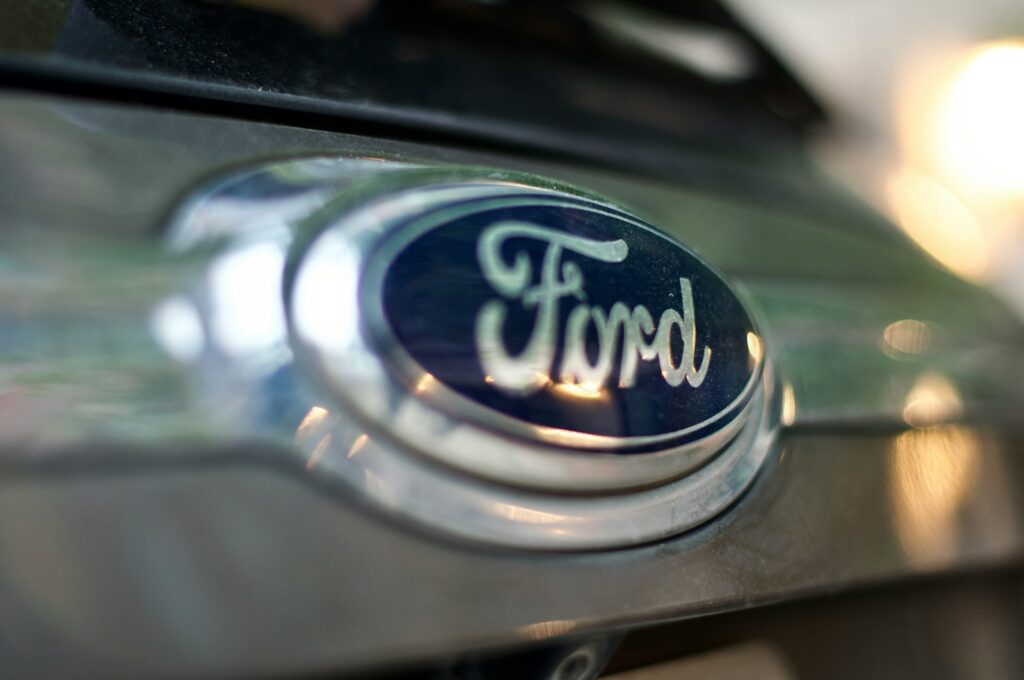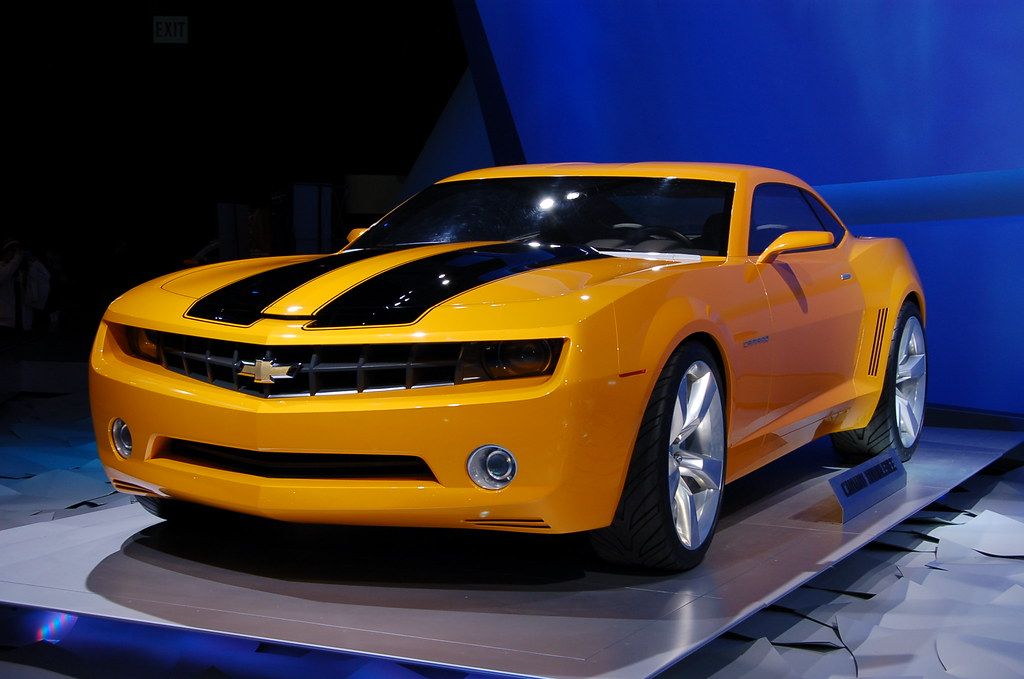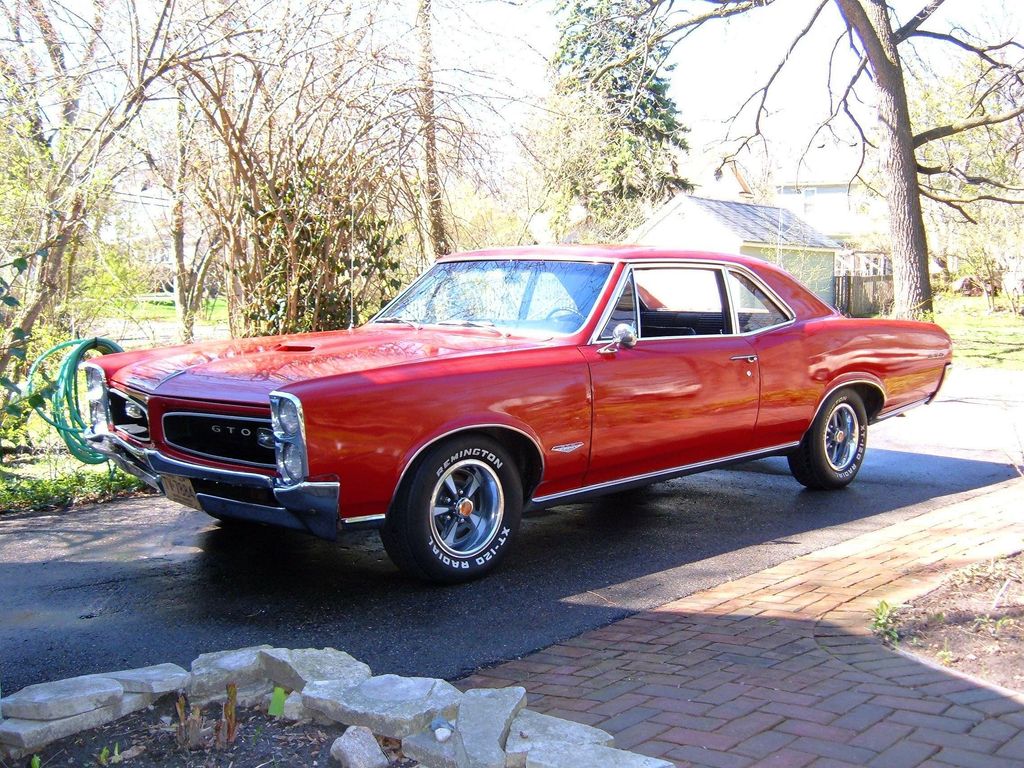
The roar of the engine, the smell of burning rubber, and the thrill of victory – these powerful sensations were not confined to the racetracks of the 1960s. This golden age saw an incredible fusion of high-octane competition and street performance, driven by American automakers’ fierce rivalry on both the track and in showrooms. The guiding philosophy was clear: “race on Sunday, sell on Monday,” a mantra that fueled the creation of some of the most iconic performance vehicles ever produced.
At the heart of this revolution was the practice of homologation, a requirement that forced manufacturers to offer race-bred powertrains to the public. This crucial rule blurred the lines between dedicated track machines and street-legal beasts, giving everyday drivers access to engines honed in the crucible of NASCAR competition. While some racing variants, like the Ford Torino Talladega, might not have shared identical engines with their showroom counterparts, a significant number of muscle cars directly inherited powerplants that were meticulously engineered and refined on the high-speed oval.
This article takes a deep dive into six remarkable muscle cars from the 1960s that encapsulate this powerful connection, featuring engines with direct roots in NASCAR racing or designed for fierce competition. These vehicles weren’t just fast; they represented a pinnacle of American engineering, innovation, and a bold challenge to established performance norms. Join us as we explore the history, the horsepower, and the lasting legacy of these incredible machines that brought the spirit of NASCAR to the streets.
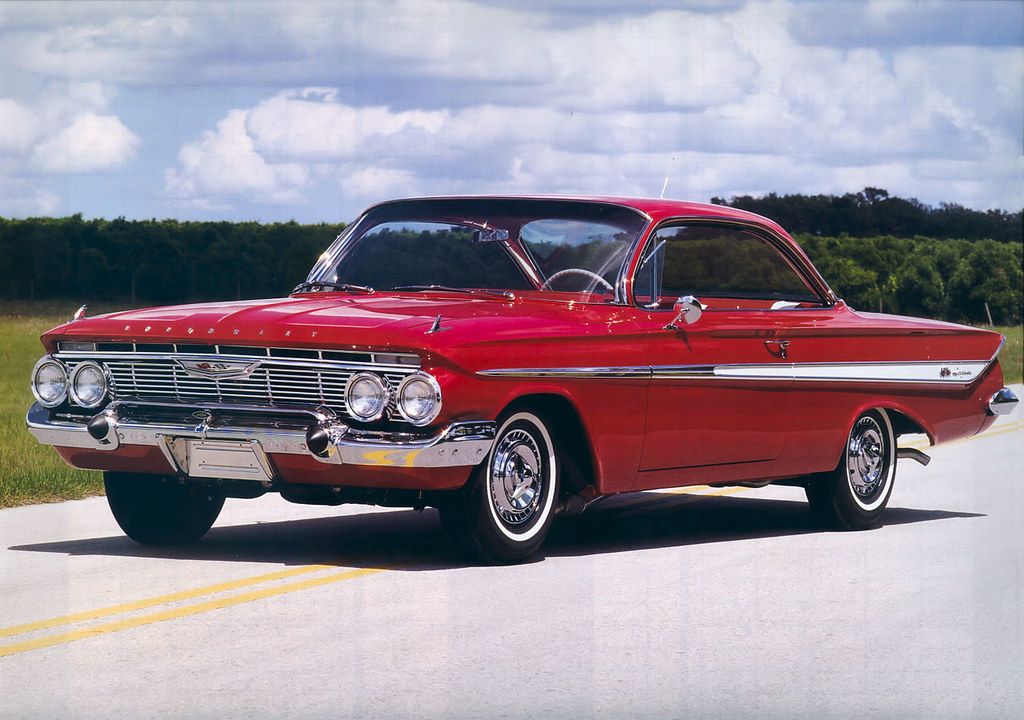
1. **1961 Chevrolet Impala SS 409**The 1961 Chevrolet Impala SS stands as a towering symbol of early American muscle car bravado, marking Chevrolet’s emphatic entry into the burgeoning world of performance-oriented vehicles. More than just a car, the Impala SS 409 became a cultural icon, embodying the very essence of power, sophisticated style, and the optimistic spirit of the early 1960s. Despite its full-size dimensions, this machine was built to perform, challenging the notion that speed was exclusive to smaller, more nimble sports cars.
The true legend of the 1961 Impala SS lies within its groundbreaking engine: the mighty 409 cubic inch V8. This particular engine was nothing short of a game-changer, quickly becoming a favorite among drag racers and performance enthusiasts for its exceptional horsepower and torque figures. Its robust construction and innovative features cemented its reputation for both reliability and blistering performance. The 409 V8 enabled the Impala SS to dominate NASCAR’s Super Stock class before General Motors’ 1963 ban on factory-supported racing, rocketing from 0 to 60 mph in a mere 6.7 seconds, a truly formidable figure for its era.
Beyond its sheer power, the 1961 Impala SS boasted a distinctive and timeless design, characterized by its sleek “bubble top” roofline, clean lines, and minimal ornamentation. The SS (Super Sport) package further enhanced its aggressive and athletic stance, adding sporty touches like upgraded suspension, distinctive badging, and stylish interior trim. Today, the 1961 Chevrolet Impala SS 409 is a highly prized possession for collectors, its rarity, historical significance, and iconic status contributing to its substantial value in the classic car market, with well-preserved examples commanding significant prices.
Car Model Information: 2023 Toyota Tacoma TRD Sport
Name: Chevrolet Impala
Caption: Fourth generation model (1967)
Manufacturer: Chevrolet
Production: 1957–1985,1994–1996,1999–2020
ModelYears: 1958–1985,1994–1996,2000–2020
Predecessor: Chevrolet Bel Air,Chevrolet Lumina#Second generation (1995–2001)
Successor: Chevrolet SS,Chevrolet Caprice
Platform: GM B platform,GM W platform,GM W platform (GMX211) (2005–2013),GM Epsilon platform#Epsilon II
Class: Full-size car,Mid-size car
Layout: Front-engine, rear-wheel-drive layout,Front-engine, front-wheel-drive layout
Categories: 1960s cars, 1970s cars, 1980s cars, 1990s cars, 2000s cars
Summary: The Chevrolet Impala () is a full-size car that was built by Chevrolet for model years 1958 to 1985, 1994 to 1996, and 2000 to 2020. The Impala was Chevrolet’s popular flagship passenger car and was among the better-selling American-made automobiles in the United States.
For its debut in 1958, the Impala was distinguished from other models by its symmetrical triple taillights. The Chevrolet Caprice was introduced as a top-line Impala Sport Sedan for model year 1965, later becoming a separate series positioned above the Impala in 1966, which, in turn, remained above the Chevrolet Bel Air and the Chevrolet Biscayne. The Impala continued as Chevrolet’s most popular full-sized model through the mid-1980s. Between 1994 and 1996, the Impala was revised as a 5.7-liter V8–powered version of the Chevrolet Caprice Classic sedan.
In 2000, the Impala was reintroduced again as a mainstream front-wheel drive car. In February 2014, the 2014 Impala ranked No. 1 among Affordable Large Cars in U.S. News & World Report’s rankings. When the 10th generation of the Impala was introduced for the 2014 model year, the 9th generation was rebadged as the Impala Limited and sold only to fleet customers through 2016. During that time, both versions were sold in the United States and Canada. The 10th-generation Impala was also sold in the Middle East and South Korea.
Get more information about: Chevrolet Impala
Buying a high-performing used car >>>
Brand: Chevrolet Model: Impala SS 409
Price: $38,765 Mileage: 30,935 mi.
Read more about: Behind the Melodies and Magnificence: An Enthusiastic Look at Brian Wilson’s Legendary Car Collection and His Unforgettable Automotive Legacy
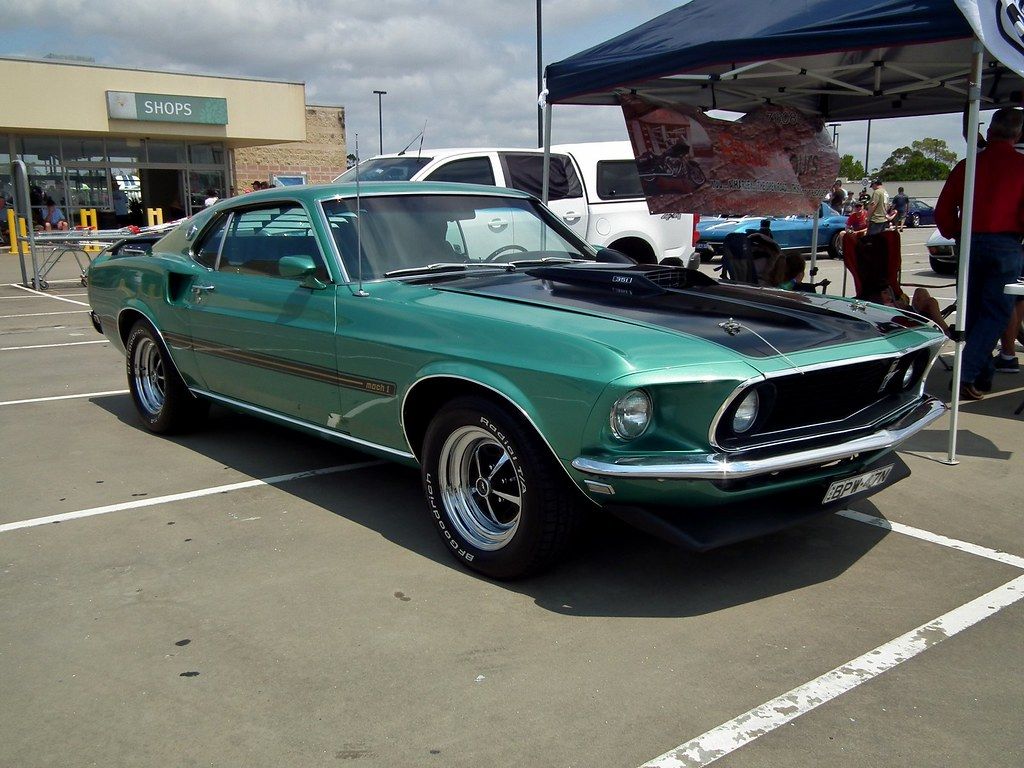
2. **1969 Ford Mustang Boss 429**The 1969 Ford Mustang Boss 429 represents a pinnacle of American muscle car engineering, emerging as one of the most coveted and valuable Mustangs ever produced. This extraordinary machine was born directly from Ford’s fervent desire to dominate NASCAR, specifically to homologate its powerful 429 cubic-inch semi-hemispherical engine for racing competition. It quickly transcended its racing origins, becoming a legendary symbol of raw American automotive power on the street.
At the very core of the Boss 429 lies its namesake engine: a massive 429 cubic-inch (7.0L) V8. This powerhouse was engineered with semi-hemispherical combustion chambers to ensure high airflow, specifically designed to challenge Chrysler’s Hemi engine in NASCAR. While factory-rated at a robust 375 horsepower and 450 lb-ft of torque, experts widely believe its actual output was significantly higher, often estimated to exceed 400 horsepower. This potent engine, paired with a heavy-duty Tremec T-56 six-speed manual transmission, delivered blistering performance for its time, achieving 0-60 mph in just 5.3 seconds.
Ford needed to produce a specific number of street-legal vehicles with this engine to meet NASCAR homologation requirements, leading to the creation of the Boss 429 Mustang. Kar Kraft, a subcontractor, modified standard Mustangs to accommodate the massive engine, widening shock towers and modifying the suspension, resulting in a unique, aggressive stance. Visually, it was set apart by a prominent hood scoop, a unique rear spoiler, and minimal badging. With only 859 models produced in 1969 and around 499 in 1970, its extreme rarity and racing pedigree make it a blue-chip collectible, with pristine examples fetching staggering sums at auction, solidifying its place as a true automotive icon.
Car Model Information: 2023 Toyota Tacoma TRD Sport
Caption: 1969 Boss 429
Layout: Longitudinal engine
Manufacturer: Ford Motor Company
Production: 1969–1970
Name: Mustang Boss 429
Class: Muscle car
BodyStyle: coupé
Assembly: Dearborn, Michigan
Height: 50.4 in
Abbr: on
Length: 187.4 in
Width: 71.7 in
Engine: 429 cuin
Transmission: manual transmission
Weight: 3870 lb
Categories: All Wikipedia articles needing clarification, All articles needing additional references, All articles with unsourced statements, Articles needing additional references from August 2008, Articles with short description
Summary: The Boss 429 Mustang is a high-performance Ford Mustang variant that was offered by Ford in 1969 and 1970. It featured a race-designed 429 cu in (7.0 L) semi-hemispherical head version of the big block 429 V8, offered in the car both to homologate the engine for NASCAR racing and to offer a bigger, more-powerful version of the popular small block 5 L Boss 302 Mustang.
The price of all the performance and modifications was steep: at nearly $5,000 a Boss 429 was roughly twice the price of the base model inline-6 Mustang. A total of 1,359 Boss 429s were produced.
Get more information about: Boss 429 Mustang
Buying a high-performing used car >>>
Brand: Ford Model: Mustang Boss 429
Price: $38,765 Mileage: 30,935 mi.
Read more about: Unearthing Hidden Horsepower: 10 Rare Muscle Cars Collectors Are Finally Noticing
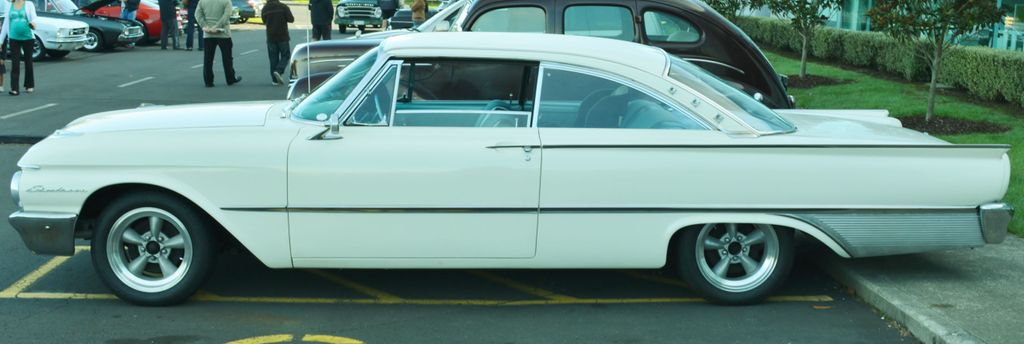
3. **1961 Ford Galaxie Starliner**The 1961 Ford Galaxie Starliner stands as a distinctive classic American icon, celebrated for its unique styling and robust performance that captivated enthusiasts during the dawn of the muscle car era. This full-size hardtop coupe is instantly recognizable by its sleek, aerodynamic roofline, a design element that significantly set it apart from other models of its time. This sophisticated yet sporty appearance contributed immensely to its popularity among car enthusiasts, embodying both elegance and underlying power.
Underneath its distinctive exterior, the 1961 Galaxie Starliner often featured a range of powerful V8 engine options. Most notably, Ford’s 390 FE V8 served as the Blue Oval’s reliable workhorse before the legendary 427 FE and cammer engines took center stage in racing efforts. In its standard configuration, the 390 V8 produced a respectable 300 horsepower and 375 lb-ft of torque. However, for those craving maximum power, Ford offered the formidable 6V Thunderbird Special, which propelled output to a staggering 401 horsepower and 430 lb-ft of torque, though this required mechanical lifters and stricter maintenance. These powerful engines allowed the Starliner to achieve 0-60 mph in approximately 7.5 seconds.
The 1961 Ford Galaxie Starliner is highly prized by collectors today, not only for its unique design and relative rarity but also for its significant role in automotive history. Its connection to racing is particularly fascinating; when the aerodynamic Starliner was discontinued in 1962, Ford’s NASCAR teams faced increased drag with the boxier coupes. In an innovative, albeit short-lived, solution, Ford engineers devised the “Starlift,” mating a Starliner roof to a Sunliner convertible. Despite its ingenious adaptation, the Starlift was ultimately disqualified after a single race, cementing the Starliner’s legacy as a car that inspired innovative engineering for the track.
Continuing our journey through the illustrious era of ’60s muscle, we now turn our attention to more track-bred titans that conquered both the circuit and the street. These machines, forged in the intense heat of NASCAR competition, embody the very spirit of homologation, bringing unparalleled performance and innovation directly to the eager American public. Each car represents a unique facet of how racing influenced automotive design, engineering, and the ultimate driving experience. They weren’t just fast; they were pivotal in defining an entire generation of American performance.
Car Model Information: 2023 Toyota Tacoma TRD Sport
Name: Ford Galaxie
Caption: 1963 Ford Galaxie 500 4-Door Sedan
Manufacturer: Ford Motor Company
Production: 1958–1974 (United States),1964–1968 (Australia),1967–1983 (Brazil)
ModelYears: 1959–1974
Assembly: Homebush West,Australia,São Paulo,Brazil
Class: Full-size
Layout: FR layout
Predecessor: Ford Fairlane (Americas)
Successor: Ford LTD (Americas)
Categories: 1960s cars, 1970s cars, All articles with unsourced statements, Articles with short description, Articles with unsourced statements from February 2010
Summary: The Ford Galaxie is a car that was marketed by Ford in North America from the 1959 to 1974 model years. Deriving its nameplate from a marketing tie-in with the excitement surrounding the Space Race, the Galaxie was offered as a sedan within the full-size Ford range throughout its production run. In the full-size segment, the model line competed against the Chevrolet Impala and Plymouth Fury.
The model line was assembled by Ford in multiple sites across the United States; four generations of the model line were produced. The Galaxie was also produced locally by Ford Australia and Ford Brasil, adopting commonality from the third-generation 1965 design.
Get more information about: Ford Galaxie
Buying a high-performing used car >>>
Brand: Ford Model: Galaxie Starliner
Price: $38,765 Mileage: 30,935 mi.
Read more about: Ford’s 16 Greatest Rides: Iconic Cars & Trucks That Defined Cool
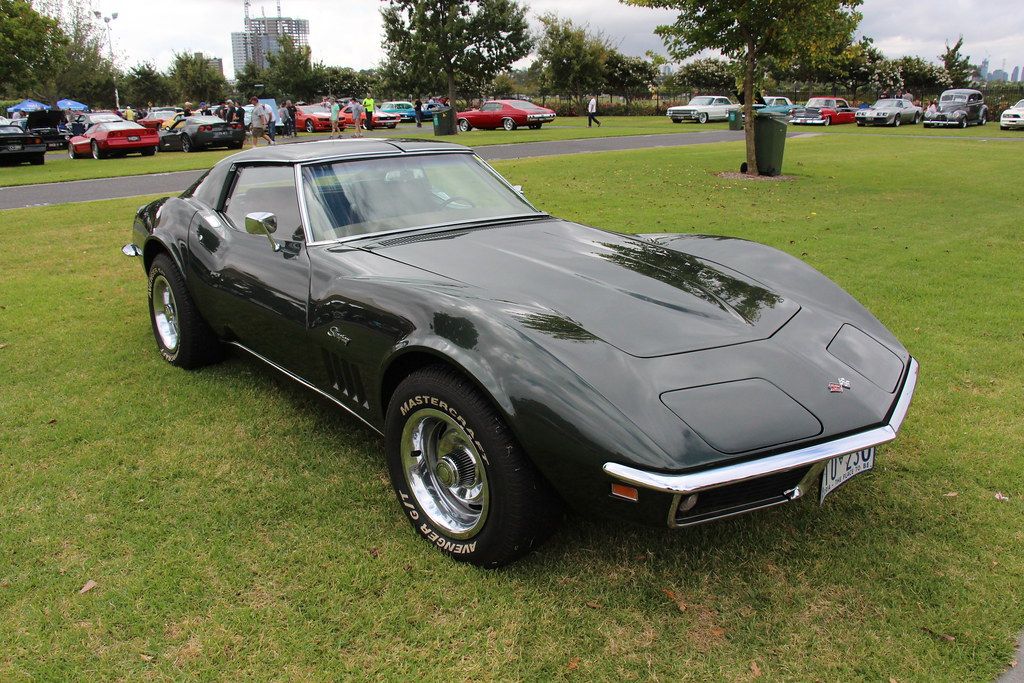
4. **1969 Chevrolet Corvette Stingray ZL1**The 1969 Chevrolet Corvette Stingray ZL1 stands as a true legend, a testament to raw power and exceptional rarity that commanded a staggering $313,500 at a recent Mecum auction. This machine is far more than just a collectible; it’s a piece of automotive history, renowned for being one of only two ever produced with its specific, highly coveted configuration. Its allure lies in an almost mythical blend of extreme performance and scarcity, making it a blue-chip collectible that continues to appreciate in value, solidifying its status as a pinnacle of American engineering.
At the very heart of this legendary Corvette is the formidable ZL1 all-aluminum 427 cubic inch big-block V8 engine. This powerplant was originally conceived and designed for the demanding world of Can-Am racing, a testament to its brutal power and durability. While officially rated at an astounding 430 horsepower (SAE gross), insiders and enthusiasts widely agree that its true output often soared well over 500 hp in reality. Coupled with a robust Muncie M21 four-speed close-ratio transmission and a firm 3.70:1 positraction rear end, this ZL1 delivered what was truly unparalleled performance for its era, enabling it to go toe-to-toe with, and often surpass, some of the finest European exotic cars of its time. Its ability to surprise and outpace more expensive rivals cemented the Corvette’s legacy as America’s sports car triumph.
Adding to its unique appeal and scarcity, the particular ZL1 example that fetched such an impressive sum boasted a singular combination of factory options. Finished in a striking Daytona Yellow exterior complemented by a classic black interior, it featured desirable additions such as transistor ignition, an auxiliary hardtop for all-weather versatility, and even an AM/FM radio for cruising enjoyment. Records meticulously indicate that this specific vehicle is the only ZL1 Corvette known to be equipped with both the auxiliary hardtop and the radio, further solidifying its place as a truly unique and immensely desirable piece of automotive history. This meticulous attention to detail extends to its immaculate presentation, having undergone a complete frame-off restoration that brought the car back to virtually flawless condition, making it a show-stopping example and a prime investment piece in the world of classic cars.
Car Model Information: 2023 Toyota Tacoma TRD Sport
Name: Chevrolet Camaro
Manufacturer: Chevrolet
Production: 1966–2002,2009–2023
ModelYears: 1967–2002,2010–2024
Class: Pony car
BodyStyle: coupe,convertible
Platform: GM F platform,GM Zeta platform,GM Alpha platform
Layout: Front-engine, rear-wheel-drive layout
Categories: 1970s cars, 1980s cars, 1990s cars, 2+2 coupés, 2000s cars
Summary: The Chevrolet Camaro is a mid-size American automobile manufactured by Chevrolet, classified as a pony car. It first went on sale on September 29, 1966, for the 1967 model year and was designed to compete with the Ford Mustang. The Camaro shared its platform and major components with the Firebird, produced by General Motors’ Pontiac division that was also introduced for the 1967 model year.
Four distinct generations of the Camaro were developed before production ended in 2002. The nameplate was revived on a concept car that evolved into the fifth-generation Camaro; production started on March 16, 2009.
Production of the sixth generation of the Camaro ended in December 2023, for the 2024 model year.
Get more information about: Chevrolet Camaro
Buying a high-performing used car >>>
Brand: Chevrolet Model: Corvette Stingray ZL1
Price: $38,765 Mileage: 30,935 mi.
Read more about: These Are The Fastest Muscle Cars Ever: From Classic Legends to Modern Monsters
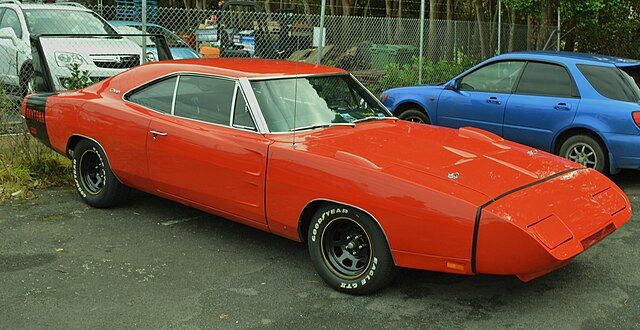
5. **Dodge Charger Daytona**The Dodge Charger Daytona is an undeniable icon of the ’60s muscle car era, an aerodynamic marvel born directly from the crucible of NASCAR competition. Its distinctive, elongated nose cone and massive rear wing were not merely styling cues; they were engineering necessities, meticulously designed to give Dodge a crucial aerodynamic advantage on the high-speed oval tracks. The very existence of the Daytona on public roads underscores the strict homologation rules that governed NASCAR racing, which required manufacturers to offer race-bred powertrains and body designs to the public in limited quantities to qualify for competition.
This commitment to homologation meant that the Charger Daytona was not just a car inspired by racing; it was a car *specifically designed for NASCAR* from its inception. Every curve, every modification, served the singular purpose of achieving maximum speed and stability on the track, particularly at the dizzying velocities reached on superspeedways. The requirement to produce these specialized vehicles for street sale, even in limited numbers, brilliantly blurred the lines between the dedicated track machines and the street-legal beasts. This direct transfer of highly specialized racing design to a consumer product exemplified the ‘race on Sunday, sell on Monday’ ethos in its most extreme and visually striking form, offering ordinary drivers a tangible piece of racing glory.
The enduring legacy of the Dodge Charger Daytona is deeply rooted in its audacious design and its unyielding purpose. It stands as a towering symbol of automotive innovation driven by the relentless pursuit of victory. Its rarity, directly linked to the limited production runs necessary to meet NASCAR’s stringent homologation requirements, has cemented its status as a blue-chip collectible. Beyond its value, the Daytona represents a golden age where the demands of the racetrack directly shaped the cars available in showrooms, showcasing Dodge’s unwavering dedication to raw power and performance, and its willingness to push engineering boundaries for ultimate speed, leaving an indelible mark on American automotive history.
Car Model Information: 2023 Toyota Tacoma TRD Sport
Name: Dodge Charger Daytona
Caption: 1969 Dodge Charger Daytona
Manufacturer: Dodge
Production: 1969–1970,2006–2009,2013,2017–2023
Class: Muscle car
Layout: FR layout
Categories: 1960s cars, 1970s cars, 2000s cars, All articles needing additional references, All articles with unsourced statements
Summary: Dodge produced three separate models with the name Dodge Charger Daytona, all of which were modified Dodge Chargers. The name was taken from Daytona Beach, Florida, which was an early center for auto racing and still hosts the Daytona 500, NASCAR’s premier event. The original Dodge Charger Daytona was designed to beat the competition in NASCAR racing. It was the first NASCAR vehicle to reach 200 miles per hour, which was a major milestone at the time.
The first use of the ‘Daytona’ name for a car was on a version of the Studebaker Lark. The Daytona was the performance model of the compact Lark, and it was produced during the 1960s.
Get more information about: Dodge Charger Daytona
Buying a high-performing used car >>>
Brand: Dodge Model: Charger Daytona
Price: $38,765 Mileage: 30,935 mi.
Read more about: Classic Cars Skyrocketing in Value: 26 Models Worth Investing In

6. **Ford Torino Talladega**Following closely in the footsteps of its aerodynamic counterparts, the Ford Torino Talladega emerges as another pivotal homologation hero from the late 1960s, a testament to Ford’s aggressive and strategic pursuit of NASCAR dominance. This vehicle was purposefully engineered to conquer the high-speed circuits, a direct response to the intense aerodynamic battles waged by manufacturers like Dodge and Plymouth. The Talladega, a name synonymous with one of NASCAR’s fastest tracks, was designed with a specific mission: to provide Ford’s racing teams with an edge on the fastest oval tracks in America, embodying a pure, unadulterated focus on competition.
A key distinction of the Ford Torino Talladega, as highlighted by the era’s homologation practices, was that while it was undeniably a NASCAR-bred machine, its racing variants didn’t always share the exact, identical engine specifications with their showroom counterparts. This nuance, however, did not diminish its significance. Instead, it underscored a sophisticated approach to racing development where the street-legal version, even with slight engine variations, served the critical purpose of qualifying the overall aerodynamic and chassis platform for competition. This strategy allowed Ford to continually refine crucial elements like body shape and suspension in the unforgiving environment of the racetrack, feeding that innovation back into its broader performance car development.
The purpose-built nature of the Torino Talladega cemented its enduring legacy as an integral part of the ’60s muscle car narrative. It stands as a powerful symbol of Ford’s relentless commitment to competition, showcasing how a manufacturer could strategically meet homologation requirements while still offering a distinct, high-performance vehicle to the public. These cars were more than just sales figures; they were tangible proof of the engineering prowess honed on the track, giving enthusiasts a taste of the speed and power that dominated NASCAR Sundays. The Torino Talladega, with its racing pedigree and purposeful design, continues to captivate collectors and enthusiasts, preserving a unique chapter in American automotive history where track performance directly shaped street appeal.
Car Model Information: 2023 Toyota Tacoma TRD Sport
Name: Ford Torino Talladega
Manufacturer: Ford Motor Company
Related: Mercury Cyclone Spoiler II,Ford Torino
Production: 1969
ModelYears: 1969
Class: Race car
BodyStyle: fastback
Designer: FoMoCo
Categories: All articles lacking in-text citations, All articles needing additional references, All articles with specifically marked weasel-worded phrases, All articles with unsourced statements, Articles lacking in-text citations from July 2015
Summary: The Ford Torino Talladega is a muscle car that was produced by Ford only during the first few weeks of 1969. It was named for the Talladega Superspeedway, which opened the same year. The Talladega was a special, more aerodynamic version of the Torino / Fairlane produced specifically to make Ford even more competitive in NASCAR racing, and it was sold to the public only because homologation rules required a certain minimum number of cars (500 in 1969) be produced and made available.
All production Talladegas were equipped with the new 428 Cobra Jet, which, while very powerful and reliable, was intended as a street engine for Ford’s muscle cars, as it developed high torque at low RPMs, rather than being a high-revving race engine. Early racing builds were powered by the FE 427 side oiler that had been Ford’s main racing engine since 1963; later versions received the Boss 429 engine after it had been homologated in the 1969 Ford Mustang Boss 429.
A largely equivalent vehicle was also sold under the Mercury marque as the Cyclone Spoiler II.
Get more information about: Ford Torino Talladega
Buying a high-performing used car >>>
Brand: Ford Model: Torino Talladega
Price: $38,765 Mileage: 30,935 mi.
Read more about: Unearthing Hidden Horsepower: 10 Rare Muscle Cars Collectors Are Finally Noticing
As we look back at these six legendary muscle cars, it becomes clear that the fusion of NASCAR innovation and street performance was more than just a fleeting trend; it was a revolution. Each of these vehicles, from the Impala SS 409 to the Torino Talladega, represents a daring chapter in American automotive history, where engineering prowess met fierce competition head-on. They were homologation heroes, track-bred titans, and aerodynamic marvels that brought the thunderous roar and the cutting edge of racing technology directly to the highways and byways of America, forever solidifying their place as icons of power, speed, and unforgettable style.


